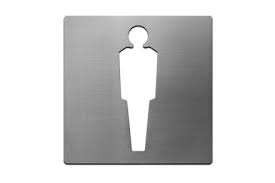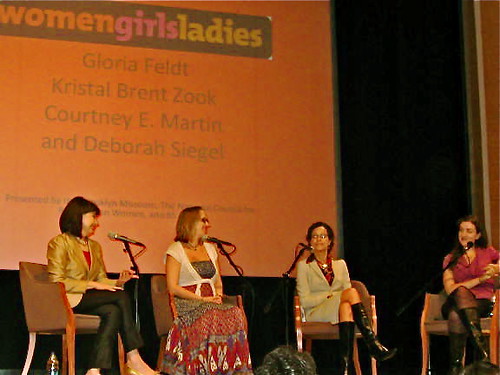 A few years ago (ok may more than a few) Gil Scott Heron said the revolution would not be televised and Tracey Chapman, when talking about the revolution, thought it would whisper, not ‘tweet’. Iranian women and men are risking their lives to protest for their rights and their voices will be heard, televised, and ‘tweeted’.
A few years ago (ok may more than a few) Gil Scott Heron said the revolution would not be televised and Tracey Chapman, when talking about the revolution, thought it would whisper, not ‘tweet’. Iranian women and men are risking their lives to protest for their rights and their voices will be heard, televised, and ‘tweeted’.
If you’re like us, you’ve spent the past couple of weeks glued to your computer, watching the historic Iranian election – and its aftermath – unfold. For us, what’s been important are not only the changes in Iranian society that the post-election protests signal, but women’s role in these protests (dare we say revolution) and what this election means for Iranian women.
On June 20th a young woman and her father took to the streets demanding to be heard, not knowing that hers would echo across the globe. When they named their daughter, her parents probably could not fathom how well her name suited her; Neda in Farsi means the voice or the call. Neda and thousands of women are taking to the streets and demanding equal rights. Dana Goldstein, of the Daily Beast, stresses that the underreported part of what is unfolding in Iran is women’s involvement in the protests.
Feminist politics are not new to Iran. According to Manilee Bagheritari, an independent gender consultant of Iranian descent, the feminist movement, or rather the ongoing three-decades old wave, is divided by two different approaches; the secular feminists (e.g. Shirin Ebadi) and Islamic feminists (though they might not prefer the label). What is important is that the two groups both demand that the state first ratify and second harmonize its laws with those of the international human rights instruments, namely the international Convention on the Elimination of All Forms of Discrimination Against Women, or CEDAW.
According to Haideh Moghissi, Professor of Sociology and Women’s Studies at York University and founder of the Iranian National Union of Women (and author of one of my favorite books, Feminism and Islamic Fundamentalism: The Limits of Postmodern Analysis), although the Iranian women’s movement has a robust and long history, “at no time has the political influence of women and women’s issues been so profoundly visible as at present.†Prior to the election and women’s visible presence in the post-election demonstrations, women’s organizations came together to demand change from presidential candidates. The coalition, which included 35 women’s and social justice groups and 600 activists and intellectuals made two major demands
“under the banner of ‘women’s coalition movement’ (jonbesh-e Hamgerai’i)…
1) Joining the United Nations Convention on the Elimination of All Forms of Discrimination Against Women (CEDAW); 2) A constitutional amendment to eliminate discriminatory articles that deprive women of equal rights with men.â€
The blog Vital Voices has the following breakdown of the positions taken on these issues by Ahmadinejad and opposition candidate Mousavi:
Mahmoud Ahmadinejad
* Ahmadinejad changed the name of the government organization the “Centre for Women’s Participation†to the “Centre for Women and Family Affairsâ€.
* Ahmadinejad proposed a new law that would reintroduce a man’s right to divorce his wife without informing her. In addition, men would no longer be required to pay alimony. In response, women’s groups have initiated the Million Signatures campaign against these measures.
* Ahmadinejad’s administration opposes the ratification of CEDAW…
* Ahmadinejad implemented the Social Safety program, which monitors women’s clothing, requires the permission from a father or husband for a woman to attend school, and applies quotas limiting the number of women allowed to attend universities.
Mir-Hossein Mousavi
* Mousavi pledged to disband the “Morality Police†that monitor women’s clothing in accordance with traditional Islamic dress.
* Mousavi vowed to support legal measures to end violence and discrimination against women.
* Mousavi has sounded support for the ratification of CEDAW.
* Mousavi promised to appoint female ministries and other high offices, if elected.
Zahra Rahnavard, wife of reformist candidate Mir Hossein Mousavi, addressed crowds earlier this month saying, “Thirty-four million women demand to have female cabinet ministers, 34 million women demand to be eligible to run for president, 34 million women want the civil law to be revised, 34 million women want the family law revised.â€
What is truly beautiful about these protests is that men and women are protesting for human rights, which most seem to realize are incomplete without women’s rights. These protests feel like the modern day Middle Eastern manifestation of the French Revolution’s call for Liberté, Egalite and Fraternité…in this case a Fraternité that encompasses both brotherhood and sisterhood.
Quick round-up of links on women’s involvement in the post-election protests and demonstrations. Please feel free to add more in comments:
In Iran, “Pretty†is Sometimes the Protest
Who was really cheated in Iran’s vote? Women.
Protests in the Wake of Iran’s Election
You can also get up-to-the-minute info on Twitter by searching #iranelection

 When I was growing up I thought it was my
When I was growing up I thought it was my  My man is really involved in this pregnancy thing, I tell ya. What a modern dude.
My man is really involved in this pregnancy thing, I tell ya. What a modern dude. We wrote a posted called
We wrote a posted called  And more importantly, what can be done?
And more importantly, what can be done? A must-read this morning: WGL panelist Courtney Martin expounds on many of the themes we discussed at
A must-read this morning: WGL panelist Courtney Martin expounds on many of the themes we discussed at  Me and my WGLs (WomenGirlsLadies) at the Brooklyn Museum! Thank you to all who came out on a rainy Saturday to talk it up about Dads, Dudes, and Doing It. Marco says we look like an all-female band here and it’s true: we wish. (We wish we had a manager, actually, is what we wish! Any takers?!) I’m dressed a little hippy dippy here, like the sole member of the group singing folk, but I’m told I get pregnancy license and hey, it’s what’s comfortable!
Me and my WGLs (WomenGirlsLadies) at the Brooklyn Museum! Thank you to all who came out on a rainy Saturday to talk it up about Dads, Dudes, and Doing It. Marco says we look like an all-female band here and it’s true: we wish. (We wish we had a manager, actually, is what we wish! Any takers?!) I’m dressed a little hippy dippy here, like the sole member of the group singing folk, but I’m told I get pregnancy license and hey, it’s what’s comfortable! There’s so much Father’s Day goodness out there today I don’t know where to start.
There’s so much Father’s Day goodness out there today I don’t know where to start. Check out this amazing interview over at ForbesWoman,
Check out this amazing interview over at ForbesWoman,  My dear friend (and fellow member of my writers’ group)
My dear friend (and fellow member of my writers’ group) 